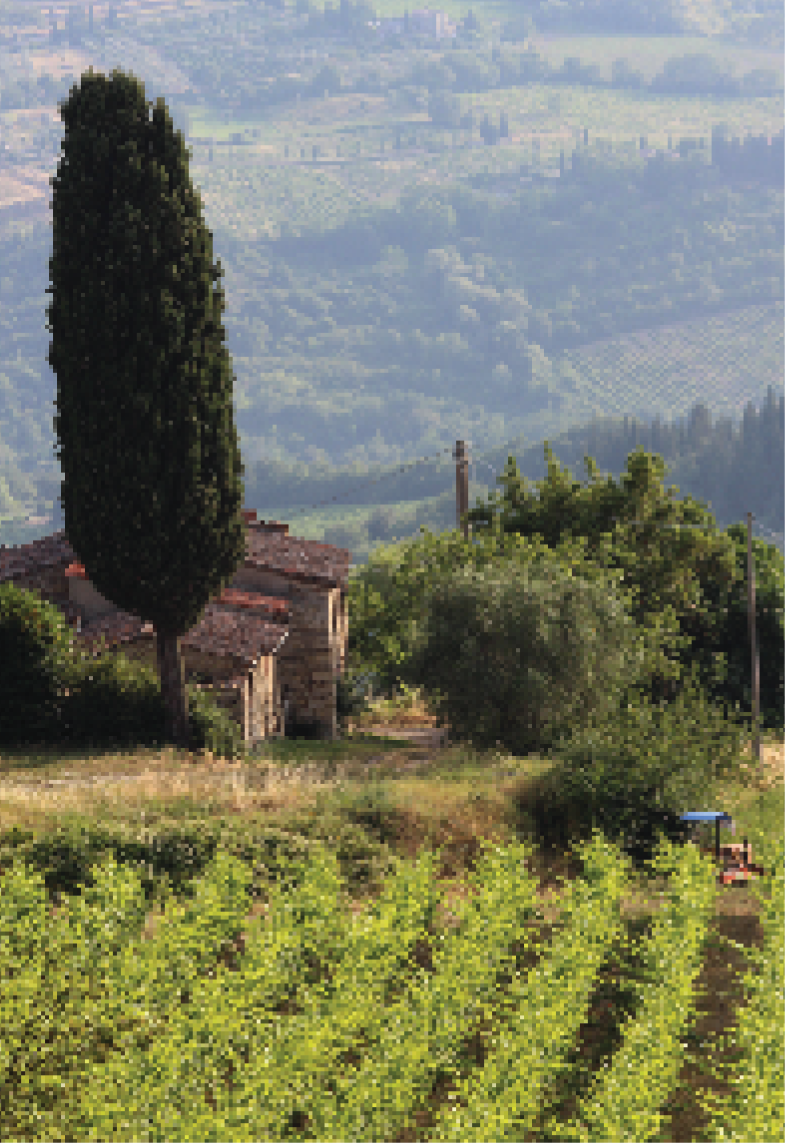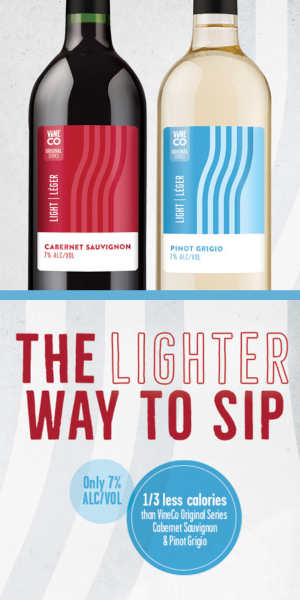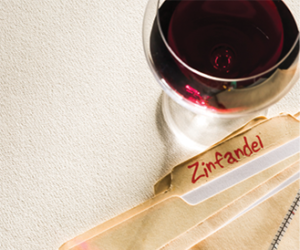 NEBBIOLO
NEBBIOLO
Nebbiolo derives its name from nebbia, in reference to the foggy conditions under which it is typically harvested, and possibly from nobile, as it is considered the most noble of Italian red varietals owing to its pedigree and the wines’ long aging potential.
Much like oenophiles refer to Pinot Noir from Burgundy as Burgundy, Nebbiolo is synonymous to Barolo, the famous wine-producing area in Piedmont in the mountainous northwest corner of Italy. However, the Nebbiolo grape is also used in other premium wines including those from Barbaresco, Gattinara and Ghemme.
But unlike Pinot Noir — or even Bordeaux varietals for that matter — Nebbiolo has not found much success yet outside its native Piedmont, producing lighter-style versions that often need to be blended with other fuller-bodied varietals for extra color, depth and tannins. In the United States and Canada, the varietal is still very much in experimental stages, for example, in California’s Central Valley as well as in the cooler climates of Washington, Oregon and Niagara, to determine best soil types and climate.
Although Nebbiolo is an early ripening varietal, it performs best in cooler climates where it requires a long growing season and much sunlight to reach optimal phenolic ripeness and acidity, and is typically harvested mid to late October in Piedmont. It was traditionally blended with other varietals, including whites, to soften the harsh tannins and to add color, but modern-day DOCG regulations stipulate that the varietal be 100% Nebbiolo — it performs best on its own.
The wines are full-bodied and robust though light-colored, and super-charged with tannins, which show a characteristic brick-orange color at the rim of the glass as those tannins slowly oxidize with maturation, and exhibit aromas of tar, roses and violets, cherries, black truffles, dark chocolate and tobacco. The best Nebbiolo may only be approachable after 10 or more years of aging and now command sky-high prices on the market.
As Nebbiolo can be so light-colored with very delicate aromas, especially from grapes from outside Italy, it usually requires extended cold soak maceration and a cooler fermentation than is typical with other red varietals. And malolactic fermentation (MLF) is necessary to reduce the high acidity for better balance with all those mouth-gripping tannins.
Your options as a home winemaker to best replicate this style is to make Nebbiolo from frozen must, fresh juice or kit. You can add oak chips to the must before fermentation or you can bulk age in oak barrels post fermentation to add notes of toasted oak; however, don’t overdo it — you don’t want the oak to overtake the varietal’s more delicate aromas and flavors. If color is still an issue, consider blending in some Cab, Syrah, Barbera if you want to preserve that “sense of place,” or any other varietal listed below, but again, try not to exceed 10−15% so as not to detract from the intended style.
BARBERA
Barbera is another popular varietal from Piedmont, and more precisely from such towns as Alba and Asti, but it has always played second fiddle to Nebbiolo given its higher availability. It adapts more easily to different soils and climates, especially warmer regions and/or less fertile calcareous soils, and is more vigorous, producing higher yields; however, the best Barberas are produced from lower-yield vines. It is planted in California’s hot Central Valley as well as Napa Valley and Sonoma. Northwestern US regions are now experimenting with this varietal.
The wines exhibit intense berry (raspberries, blueberries, cherries) aromas and tend to be deeper in color than Nebbiolo, but with less tannins and higher acidity, making these more adaptable to higher alcohol levels when desired. MLF is a requirement here to reduce the bracing acidity. Italian winemaking regulations notwithstanding, other varietals can be blended to increase tannins and reduce acidity. With little or no barrel aging, Barberas are best drunk young, but they can age well with longer barrel aging and achieve better integration between tannins and acidity. The micro-oxygenation during barrel aging can also help reduce the varietal’s natural tendency to produce hydrogen sulfide (H2S).
At home, process grapes as usual and vinify using standard winemaking practices fermenting closer to 86 °F (30 °C). Acidity in warm-climate grapes should not require any adjustments, but if it is too high for your liking, consider reducing it using potassium carbonate before fermentation, and conduct an MLF just before the completion of or right after the alcoholic fermentation.
Follow the same oaking guidelines as Nebbiolo, but, budget and time permitting, Barbera will benefit most from 12–24 months in oak barrels.
DOLCETTO
Dolcetto is another popular red varietal from Piedmont. The name translates to “little sweet one,” which tends to confuse consumer into thinking that the wines are sweet — the wines are almost always dry. But the grapes do ripen well to provide good sugar content that easily ferment up to 15% alcohol by volume (ABV). It also does well in many California viticultural areas where it is mistaken for Charbono, which DNA testing has shown no parental lineage to Dolcetto. It is also grown in other states including New Mexico and Pennsylvania.
Although true Dolcetto is usually made in an early-drinking style, some of the best Dolcettos can age very well with their high tannin and alcohol contents — alcohol can hover around 14.5–15% ABV. Acidity is usually low and provides good balance with tannins, and the vast amounts of anthocyanins in grape skins give wine a dark, inky purple color. Aromas are reminiscent of licorice, black cherry and almonds. Dolcetto is usually not blended given its natural balance.
At home, process grapes as usual and vinify using standard winemaking practices fermenting closer to 86 °F (30 °C), and possibly pressing before the end of fermentation when you have achieved your desired color to avoid over-extraction of tannins. Rarely will you need to acidify except if grapes are sourced from a hot region or vintage. In any case, conduct an MLF just before the completion of or right after the alcoholic fermentation. As the wine is prone to reductive effects and exhibit sulfurous compounds, be sure to provide the must and fermenting wine with plenty of oxygen by racking at least once a day. Follow the same oaking guidelines as Nebbiolo.
AMARONE
As we travel east to the northeastern corner of Italy to the region of Veneto and the land of cheap Valpolicella wine of yesteryear, Amarone is king here. Although the name Amarone means “big and bitter,” the wines are certainly big and bold, but certainly not bitter, certainly not when drunk at their optimal age.
Amarone is not a grape variety, but rather a wine style also known as Amarone della Valpolicella produced in the Valpolicella viticultural region in the Veneto. The wine is produced from three varieties, Corvina, Corvinone and Rondinella, using a grape-drying process known as appassimento.
The grapes were traditionally placed on straw mats and allowed to dry (raisin) for up to 120 days to concentrate sugars, flavors and color — the longer the drying period, the higher their concentrations. But the greatest benefit of the drying process is that it metabolizes acids and polymerizes tannins to provide Amarone its impeccable balance and richness.
The drying technique has evolved and is now conducted in special drying chambers equipped with controls to enable improved airflow and more control on the drying process. The style is becoming very popular in other winemaking regions of the world where any full-bodied red varietal is used.
The wines are dry, rich, deeply concentrated, and full-bodied, weighing in at 15−16% ABV, often more, but with low acidity to balance the high-tannin content, and have very long aging potential. The best Amarones require 10+ years before they start showing their potential and can age for several decades. The bouquet is spicy with aromas of black pepper, black cherries, tobacco, licorice, cassis, dark chocolate and coffee.
Your best bet here is to use juice or a kit that emulates this style as making Amarone from grapes require perfect grapes harvested very ripe to maximize sugar content with absolutely no (Botrytis cinerea) rot and then drying the grapes while again trying to prevent any form of rot. Any premature spoilage will cause damaging (laccase) enzymes to oxidize polyphenols and cause juice and/or wine color to turn brownish and tannins to degrade, seriously compromising quality. The sugar-rich fermentation can also prove to be a challenge. And with kits, you can drink the wine within a year — no need to wait until retirement.
But two techniques using grapes that might be of interest is in making Ripasso and Recioto-style wines, also from the Veneto region.
Ripasso, which translates to “to pass again,” involves a second pressing of sugar-rich grape pomace and another maceration and fermentation with some free-run, lighter wine to produce a second, deeper-colored, more tannic, higher “octane” wine.
And Recioto della Valpolicella is a sweeter wine produced from Amarone with grapes left to dry longer and by stopping the active fermentation at a pre-calculated Brix to retain as much natural sweetness as desired. If you want to make Recioto-style wine from grapes, it is best to ferment dry, stabilize the wine, add sugar to taste, and fine filter. Remember: Do not add sorbate to an MLF’d wine.
And oh! Valpolicella has come a long way since the 1960s and 70s when it was produced from lesser varietals; it is now made using similar varietals as Amarone. It’s certainly worth a try now if you want to make a light, fruity red; it’ll be ready by next summer for enjoying on the patio.
SANGIOVESE
Travelling south and towards the Mediterranean Sea, we start entering the land of Sangiovese — the most widely planted red grape variety in Italy — and Tuscany where this varietal is king though quality can be very variable. Sangiovese is usually synonymous with Chianti (wine bearing the name of the region) and the wickered fiasco (flask) that is fortunately long gone. But Sangiovese and its many clones are found in such great wines as the pure-varietal Brunello di Montalcino or in blends such as in Vino Nobile di Montepulciano and many so-called Super Tuscans — the Italians’ version of premium Bordeaux reds. It is also popular in the neighboring region of Marche — this author’s ancestral region — and throughout Central Italy.
The grape adapts well in many types of soils, particularly limestone, but requires a long growing season to reach phenolic ripeness and to attenuate the high acidity, and its thin skin makes its vulnerable to natural or handling damage as well as rot. In NA, it is having some success in California, Oregon, Washington, Virginia, Texas and the Niagara Peninsula.
As a varietal (i.e. non-blended), Sangiovese exhibits aromas of leather and tobacco intertwined with black cherries, prunes and plums.
The best option for home winemaking is fresh juice or kit as making Sangiovese from grapes can be a challenge, particularly if the yields are high. The thin skin means low anthocyanin (light color) and tannin (little bite) content, therefore requiring extended maceration and fermentation for more extraction. Little phenolic extraction will cause premature oxidation as polyphenols oxidize during processing and aging. The must may also need deacidification using potassium carbonate if acidity is excessive. MLF is always recommended here as is a long sojourn in oak barrels; you may also conduct the MLF in oak barrels for better phenolic integration. Blending with other varietals may be required to balance acidity and tannins as well as to provide more color.
Cabernet Sauvignon, Cabernet Franc and Merlot are the common blending partners (e.g. Super Tuscans); Syrah is also often used. Colorino is sometimes blended into light-colored Chianti, while Sangiovese can also be blended with Primitivo for better balance.
COLORINO
Colorino is a little-known red varietal from Umbria in Central Italy as well as Tuscany where it was used primarily as a blending wine to add color; it derives its name from the deep-colored wine it produces.
The thick-skinned Colorino berries are loaded with anthocyanins and make the varietal very resistant to rot, but unfortunately, aroma and flavor compounds under those thick skins are somewhat limited.
Colorino’s resistance to rot makes it a good candidate for drying appassimento style to further concentrate color.
The wines exhibit aromas of licorice, cinnamon and black pepper; they show well on their own but are much improved when blended with Sangiovese or traditional Bordeaux varietals.
MONTEPULCIANO
Montepulciano is Italy’s second-most widely planted varietal stretching from Emilia-Romagna to the north, across Central Italy where it is most popular and as far south as Apulia (Puglia) on the heel of the boot where the Adriatic Sea meets the Ionian Sea. But it is best known in Abruzzo in Central Italy, where it is generally referred to as Montepulciano d’Abruzzo. This name avoids confusion with the Tuscan town of Montepulciano, where no such grapes are grown, and the Sangiovese-based Vino Nobile di Montepulciano. It is often blended with Sangiovese into what is known as Rosso Piceno in Marche.
As a late-ripening varietal, it thrives best in warmer climates where phenolic ripeness and acidity are not as much of an issue. When harvested at optimal conditions and low yields, Montepulciano wines can be deeply-colored, rich in aromas and flavors redolent of plums and jam with a good balance between tannins and acidity.
But if you are making Montepul-ciano from grapes, you should plan on getting at least 10% more than your typical varietal — I always figure 220 lbs. (100 kg) to get 20 gallons (75 L) of juice for most varietals — to get the same yield given the smaller juice content in berries. You may also need to add some tartaric acid pre-fermentation to boost the low acidity, so make sure to measure TA (total acidity) once you’ve crushed the grapes.
AGLIANICO
Aglianico is believed to have originated in Greece, its name being derived from Ellenico (Hellenic), though it finds its home in the regions of Campania and Basilicata where it thrives in the hot, sunny weather of southern Italy. Ostensibly, the varietal does well in hot regions of the United States such as California and Texas, but it still needs a long growing season even though it buds early in the spring. Italians often call it Uva Nera (black grapes) as it produces deeply colored wines, but this name is confusing as many Italians often refer to any red varietal as uva nera.
Aglianico makes for full-bodied, very tannic wines with high acidity that is best tamed pre-fermentation with potassium carbonate, for example, when making wine from grapes; so again, make sure to measure TA once you’ve crushed the grapes. Initiate the MLF towards the end of the alcoholic fermentation to further reduce acidity and to add flavor complexity. You should also consider blending Aglianico with other varietals to try and balance tannins, acidity and color.
Although tannins and acidity might be a challenge with this varietal, well executed winemaking will reward you with a wine worthy of cellaring for many years. The wines exhibit aromas of dark chocolate and plums.
PRIMITIVO
Primitivo is indigenous to Apulia and has been confirmed through DNA fingerprinting to be identical to Zinfandel, very popular in California. According to “Oz Clarke’s Encyclopedia of Grapes,” Zinfandel is widely planted in other continental states in the United States including Arizona, Colorado, Illinois, Indiana, Iowa, Massachusetts, Nevada, New Mexico, New York, North Carolina, Ohio, Oregon, Tennessee, Texas and Washington.
The varietal thrives best in warmer climates to produce high amounts of polyphenols, and particularly anthocyanins, and bag-loads of sugar — Brix levels in 28−30 range are not uncommon. And so the wines tend to be full-bodied and are characterized by fresh red berry fruit, anise and pepper depending on the provenance of the fruit.
Alcohol levels around 15% ABV can make this varietal a challenge to balance. When picked early, Primitivo can make lighter, fruitier wines that are more approachable in their youth.
Primitivo-style reds had not caught on yet as United States wineries exploited the varietal to satisfy the American palate for sweeter wines and flood the market with White Zinfandel, or blush wine. It was also used to make cheap jug wines given its availability and high yields. But many wineries and home winemakers have shown that Zinfandel can make superb reds, particularly with some oak-barrel aging, and the proof is in the Primitivo.
Zinfandel berries are think-skinned, and therefore prone to rot, and bunches tend to ripe unevenly. If you are sourcing Zinfandel grapes to make Primitivo-style wine, be sure to remove unripe fruit to eliminate “green” flavors, and any and all rotten grapes as enzymatic oxidation effects can linger on to age the wine prematurely and impart a brownish color.
Merlot and Sangiovese are great blending partners with Primitivo. The varietal also lends itself well to making port-style and dessert wines.
NERO D’AVOLA
Nero d’Avola (meaning “Black of Avola”) is to Sicily what Sangiovese is to Tuscany. It derives its name from the city of Avola in the southernmost tip of Sicily where it is planted extensively. And as this Mediterranean island just at the tip of the Italian boot is experiencing a resurgence on international wine markets following a winemaking technology modernization program, Nero d’Avola is quickly gaining popularity.
Nero d’Avola thrives best in hot climates; for this reason and that it shares many similar quality attributes, it is often compared to Syrah. So the wines are typically deep-colored, full-bodied with moderate acidity and sweet tannins, redolent of aromas of spices and chocolate, and peppery flavors laced with plums.
As with Syrah, Nero d’Avola is superb on its own or as a blend with any Bordeaux varietal.
FOOD PAIRING
Italian epicure being what it is, it’s very easy to find and match one or more styles of wines to pair with food. When in doubt, pair a wine with a region’s food style as it can vary widely from one region to another. Remember: The idea is to have wine complement food and not one taking over the other. Here are course suggestions where reds are involved.
Opt for lighter reds, such as a fruity Valpolicella, with antipasto (an assortment of cured meats, olives, artichoke hearts and pickled vegetables, pomodori con bocconcini and some greens), the typical first course of any Italian meal, especially if entertaining outdoors.
Chill the wine ever so slightly for added freshness.
Pasta with tomato-based or tomato-and-meat sauces needs something fuller-bodied, such as a Chianti or Montepulciano, to tame the acidity of the sauce. And go easy on the Parmigiano-Reggiano (Parmesan) so as not to detract from the wine’s aromas and flavors.
Red meat is best served with a full-bodied, tannic wine, such as a Barolo, Amarone or Nero d’Avola — the fattier the meat, the more tannic the wine should be. You want those tannins to cut through the fat, and the wine will taste softer as the tannins bind with salivary and meat proteins.
For the cheese course, you’ll need to continue with a full-bodied red but nothing overly alcoholic or tannic. Lighter Ripassos and Barberas or even a Sangiovese will be perfect.
And for after dinner, as a digestif, grappa is de rigueur. Although grappa is not a red wine (and those who know me know that I could not resist talking about grappa), there are many red-wine-derived grappas. Try a Grappa di Barolo or Grappa di Cabernet Sauvignon.
Life doesn’t get any better. Alla Salute!






